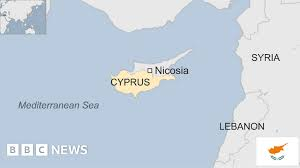Welcome to Teak Publishing's Shortwave Central blog. This blog covers shortwave frequency updates, loggings, free radio, international mediumwave, DX tips, clandestine radio, and late-breaking radio news. Visit my YouTube and Twitter links. Content on Shortwave Central is copyright © 2006-2026 by Teak Publishing, which is solely responsible for the content. All rights reserved. Redistribution of these pages in any format without permission is strictly prohibited.
Tuesday, December 31, 2024
Happy New Year 2025
Monday, December 30, 2024
Wavescan's focus on New Year Radio Events Around the World
New Years Eve programming from Jen & GB
Voice of Turkey's reorganization as TRT Global
Weekly Propagation Forecast Bulletins
Sunday, December 29, 2024
Classical Encore music from Radio Tumbril
New Year broadcast from Radio Victoria
Pop Shop Radio New Year's Disco Party!
Get ready for the Pop Shop Radio 250 kilowatt New Year's Disco Party! Bring in the New Year 2025 with the world's biggest party on shortwave, so dust off your dancing shoes and make a note to tune to 6060 kHz at 0300 UT on 1 January 2025. It will be beamed from Woofferton in the UK to North America
Saturday, December 28, 2024
SWL 2025 Contest
Friday, December 27, 2024
List of private MW stations in Italy
BBC World Service schedules via Cyprus
Radio DARC announces December 29 broadcast
 |
| Moosbrunn Austria |
AUSTRIA On Sunday, December 29, 2024, RADIO DARC will have the honor of finally burying the station with a 2-hour farewell broadcast. It could be the last Radio DARC broadcast from the facility.
Tuesday, December 24, 2024
Radio Seagull Christmas special
Norman Barrington was a disc jockey on Radio Caroline, Radio Seagull, and Radio Mi Amigo in the 1970s.
Monday, December 23, 2024
Shortwave Marathon broadcast on December 26
A marathon broadcast on December 26, 2024, seven German "radio stations" have joined forces to produce a marathon broadcast running from 0900 until 1500 UTC on 6070 kHz.
Radio Events Around the World on Christmas Day
Holiday Programming - Version 4 update
The fourth fully updated edition of my compilation of programming scheduled to be broadcast (mostly) on shortwave over the forthcoming holiday period up to Wednesday 1 January 2025 is now available from the permanent link at:
KWHR Hawaii on O Holy Night
Over the years, LeSea verified listener reception reports with at least three different colorful QSL cards, including an introductory limited edition First Day QSL. KWHR QSL cards have depicted a Hawaiian map, and a collage of Asian peoples. All that remains these days of the twenty year tenure of shortwave station KWHR on the big island of Hawaii is the sturdy concrete transmitter building, still apparently
Christmas Day programing from RNEI and Pop Shop Radio
Christmas broadcast from Texas Radio Shortwave
Radio Victoria slated for Shortwave-Revival 2024
Holiday programming from Radio Delta
Sunday, December 22, 2024
Annual longwave holiday programs slated
Annual NDR Gruß an Bord program on Christmas Eve
The MBR B-24 schedule lists the annual NDR Gruß an Bord (Greetings on Board for seafarers) show, on 24 December from 1800-2100 UTC on the following frequencies
The 'Gruss an Bord' NDR Hamburg has been around since 1953. After the end of the German-language shortwave programs of Deutsche Welle, it is carried by the NDR alone. Last year, the chairwoman of the Association of German Shipowners, Gaby Bornheim, honored the seventy-year tradition as follows: "'Greetings on board' has a tradition, yes, it is a tradition and certainly not an anachronism. Even if today, thanks to increasing digitalization, it is possible for sailors on board to speak to their relatives at home almost at any time, 'Greetings on board' is still something very special. It is about the connection between our sailors and their loved ones at home, who feel the separation so painfully, especially at the festival of love. The emotional, melancholic, but also happy messages from the mothers, fathers, sisters, brothers and children of our sailors reflect the life that goes on, at home and on board. And this connection between the two, this bridge between land and sea, is needed today just as much as it was 70 years ago!" (Dr. Hansjoerg Biener-D, Kurier Weltschau / Bieners DX Digest Nov 10)








.JPG)














.JPG)







.JPG)


